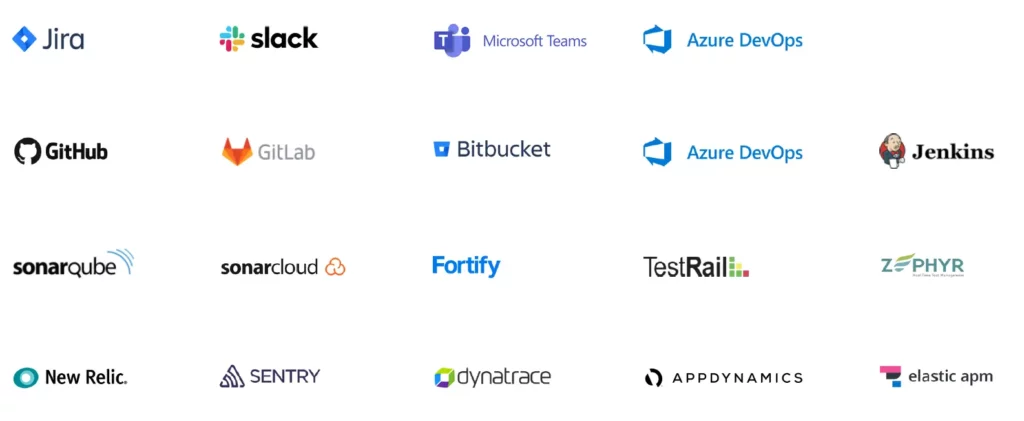What is SDLC?
The Software Development Life Cycle (SDLC) is a structured process software developers use to design, develop, test, deliver, and maintain high-quality software. The SDLC meaning is to produce software that meets or exceeds customer expectations, reaches completion within times and cost estimates, and is cost-efficient to produce and maintain. The SDLC process includes planning, creating, developing, testing, and deploying software.
What are the Stages of SDLC?
The stages of the SDLC are crucial to the development of software projects and typically include:
- Planning: Defining objectives, scope, and feasibility.
- Requirements Analysis: Gathering detailed requirements from stakeholders.
- Design: Creating architectural and detailed design plans.
- Implementation (Coding): Writing the actual code.
- Testing: Ensuring the software is defect-free.
- Deployment: Delivering the software to users.
- Maintenance: Ongoing support and refinement.
These software development life cycle phases ensure a comprehensive approach to delivering a successful software project.
What are SDLC Models?
SDLC models provide a framework for planning and controlling the development and delivery process. These models include:
- Waterfall Life Cycle Model: A linear and sequential approach.
- V-Model: Verification and validation model.
- Iterative Model: Development in repetitive cycles.
- Spiral Model: Combining iterative development with systematic aspects of the waterfall life cycle.
- Agile Model: Promoting adaptive planning and flexible response to changes.
Each of these software development life cycle models offers unique benefits depending on the project’s requirements and constraints.
Popular SDLC Methodologies
The most popular SDLC methodologies are:
- Agile SDLC: Focuses on iterative development and customer collaboration.
- Waterfall Life Cycle: A sequential design process.
- Lean Software Development: Emphasizes optimizing efficiency and eliminating waste.
Agile SDLC is widely used due to its specific advantages in different project environments.
Why is SDLC Important?
The SDLC is important because it provides a structured approach to software development, ensuring high quality and efficiency. It helps in managing complexity, minimizing risks, and improving project management and control. By following an SDLC, teams can produce software that is reliable, maintainable and meets the needs of stakeholders.
How the SDLC Works
The SDLC works by dividing the software development process into distinct phases, each with specific deliverables and objectives. This structured approach ensures that all aspects of development are addressed, from initial requirements to final deployment and maintenance. This leads to improved project outcomes, better-quality software, and greater user satisfaction.
SDLC Tools & Categories
Version Control Systems
Version control systems like GitHub, Azure DevOps, Bitbucket, and GitLab help manage changes to source code over time, allowing multiple developers to collaborate effectively.
CI/CD Tools
Continuous Integration and Continuous Deployment (CI/CD) tools like Jenkins, Azure Pipelines, GitLab CI, GitHub Actions, Octopus Deploy, and TeamCity automate the testing and deployment of code, ensuring rapid and reliable delivery.
Project Management and Issue Tracking Tools
Tools like Jira and Azure Boards help teams plan, track, and manage software development projects and issues.
Code Quality Analysis Tools
Tools like SonarQube and SonarCloud analyze code for quality and adherence to standards, helping to maintain high-quality codebases.
Security Analysis Tools
Security tools like Fortify and Veracode scan software for vulnerabilities, ensuring security is prioritized throughout the development lifecycle.
Testing Tools
Automated testing tools like Testinium and Selenium ensure that software is thoroughly tested before release, catching bugs early in the development process.
Application Performance Monitoring Tools
Tools like New Relic, Sentry, Dynatrace, and Datadog monitor application performance in real time, providing insights into performance bottlenecks and user experience issues.
Incident Management Tools
Tools like PagerDuty, OpsGenie, and ServiceNow help manage and respond to incidents quickly, minimizing downtime and maintaining service reliability.
How to Measure SDLC Performance
Measuring the performance of the SDLC involves tracking various metrics, such as:
- Cycle Time: The time it takes to complete one development cycle.
- Lead Time: The time from feature request to delivery.
- Defect Density: The number of defects per unit of code.
- Customer Satisfaction: Feedback from end-users regarding the software.
By analyzing these metrics, organizations can identify areas for improvement and optimize their SDLC processes.
Oobeya SDLC Tool Integrations
Oobeya offers robust SDLC tool integrations to streamline and enhance the development process. These integrations connect various tools and systems, providing a comprehensive view of your software development lifecycle.
Optimize the SDLC Performance with Oobeya
Optimize your SDLC performance with Oobeya’s innovative platform. By leveraging advanced analytics and integrations, Oobeya helps you identify bottlenecks, improve efficiency, and deliver high-quality software faster. Learn more about how Oobeya can optimize your software engineering processes.
